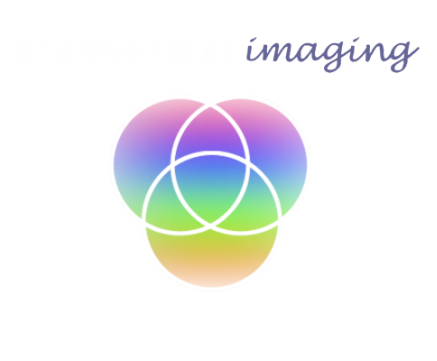
Breast Thermography
Prevention is the Cure
Breast thermography, using digital infrared thermal imaging (DITI) is a painless, non-invasive clinical test that gives people of all ages the opportunity to increase their chances of detecting breast disease at a very early stage. With breast thermography, there is no compression of the breast, and absolutely no exposure to radiation or any other harmful substance.
Each person has a ‘thermal fingerprint’, which remains essentially unchanged throughout life except in the presence of disease. Establishing a thermographic baseline by having two scans, three months apart, and then continuing to scan once a year, gives a person the opportunity to detect the subtle physiologic changes which accompany disease at a very early stage, even prior to a tumor being established.
Breast thermography has the ability to detect angiogenesis, the formation of new blood vessels. This is one of the first signs that a cancer may be forming and can present up to ten years before there is a mass. Mammography will not see these changes because it visualizes anatomic changes (masses), rather than physiology. Thermography will also show changes in the tail of the breast, armpit and upper breast, and just under the collarbone, which a mammogram cannot see because these are outside the area compressed by the plates.
Most breast cancers have been growing eight to ten years before they are detected as a mass and because of that, treatment options usually involve surgery, radiation and chemotherapy with drugs that are toxic to healthy cells in the body. With early detection of imbalance, gentler and more natural means of rebalancing the body may be used and may actually prevent a tumor from becoming established.
It is important to remember that no test is 100% accurate. In the presence of abnormal changes in the breast, no single test should be used as the sole basis to make treatment decisions. Each type of test has specific abilities to be leveraged and interpreted by a qualified health practitioner.
Our scans are interpreted by board certified medical doctors specializing in digital infrared thermal imaging. Each yearly scan is compared to the individually established baseline and carefully evaluated for any changes.
When should I start monitoring my breasts?
Most breast cancers are diagnosed in people forty years and older. This means that these tumors began their growth in the thirties and early forties, a time when mammographic screening is not effective because of the density of breast tissue prior to menopause. Breasts are also more vulnerable to the harmful effect of X-rays during this time.
Beginning thermographic screening in the late 20s or 30s, when mammograms are not as safe or effective, can reveal changes in the breast leading to tumor formation early enough that taking steps to re-balance the body can often prevent tumor formation.
How should I prepare for a breast thermogram?
For 24 hours prior to your scan avoid heavy exercise, acupuncture, massage, saunas or steam rooms.
For 2 hours prior to your scan avoid exercise and hot or cold showering. Do not shave under your arms or use deodorant, skin creams, or lotion in the areas to be imaged. Avoid sun exposure the day of the test. For best results, you should not have had a sun burn or have used a tanning booth within a week of your test.
No changes in diet or medication are necessary.
Please note you must wait 3 months after major breast surgery, chemotherapy, or radiation before having a breast scan, and at least 1 month after a biopsy or minor surgery, such as mole removal, for results to be accurate.
What happens during the procedure?
The test takes approximately 20 minutes.
Your thermographer will review your history and breast questionnaire prior to your scan. Please inform the thermographer if you have had any recent skin lesions (rashes, cuts, or abrasions) on your breasts, as the inflammation might result in inconclusive findings.
You will then be asked to remove all upper body clothing, jewelry, and to arrange long hair so it is off the shoulders. After allowing your skin to adjust to room temperature, five images will be taken of the breasts and surrounding area. The procedure is entirely non-invasive. There is no contact with the body at any time and the camera emits no radiation.
How much does its cost?
The price for breast thermography is $215 per scan.



